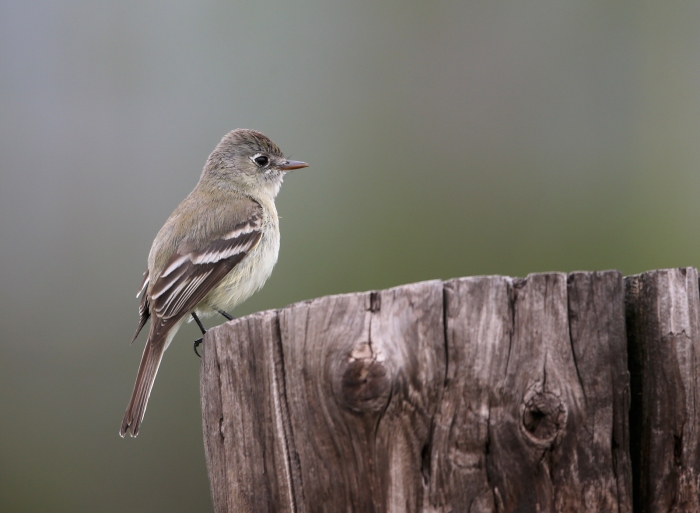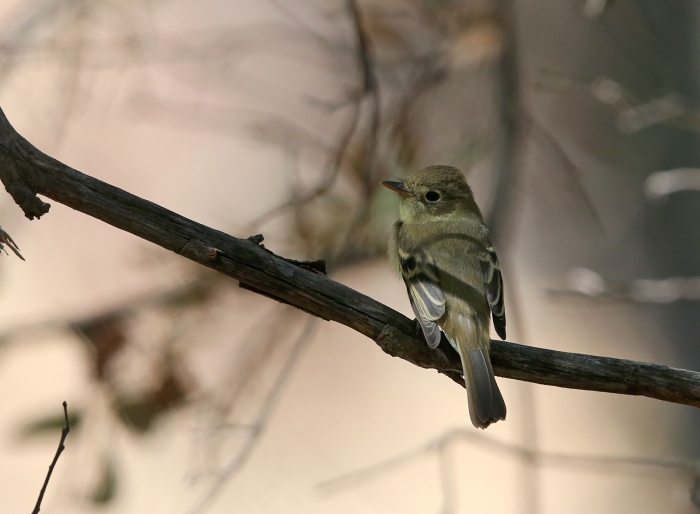Return of Bird of the Week: Pacific Slope Flycatcher

Pacific Slope Flycatcher, Pinnacles National Park, California
Once upon a time there was a bird species called a Western Flycatcher. Another member of the Empidonaxgenus. But ornithologists decided in 1989 that what had been called Western Flycatchers were actually two different species, distinguished by song and geography. Not by appearance. Birds of North America, the on-line databases of North American birds, says (paywall):
In the hand, Pacific slope and Cordilleran flycatchers may be identified with extreme caution; many individuals must be left unidentified. Sex and age differences exist within each species.
That’s right, a difficult to identify bird species was split into two almost impossible to distinguish species. To commemorate the split they gave the Pacific Slope Flycatcher the latin name Empidonax difficilis. The “difficult Empidonax. Readers may remember that WC cautioned you that Empidonaxflycatchers are hard.
Unless you are a highly skilled bird bander, you tell them apart by their voice. Or by where you are. Pacific Slope Flycatchers, as their name suggests, are more westerly. Their cousins, Cordilleran Flycatchers – next week’s bird of the week – are more an Intermountain and Rockies species. Unless you are in an area where their ranges overlap. Like the Idaho Panhandle.

Pacific Slope Flycatcher, Coastal Monterey, California
WC photographed these birds in September 2018, accompanied by two highly skilled birders and three different field guides. The birds don’t sing in September so the different songs weren’t much help. We finally agreed on the identification by a process of exclusion: we confirmed it wasn’t any of the other half-dozen Empidsthat occur in the area, we were in Pacific Slope habitat so it was most likely a Pacific Slope Flycatcher.
It doesn’t help that as a Pacific Slope Flycatcher’s feather ages, its appearance changes. Feather wear is always a consideration in bird identification, but in this species the change in appearance can be pretty dramatic. Interior birds, like the one in the first photo, spend their lives in more sunlight and less shade, and show more wear.
Empids. They’re hard.
For more bird photographs, please visit Frozen Feather Images.